“There is no happiness in parents than when their children perform exemplary in math related subjects”
Chapter 15 - ENCOURAGING THE LOVE FOR MATHS

Math has been categorized as one of the most challenging subjects in education history. Students find it frustrating and wish it was easier and simpler. When children are empowered to love math even before they go to school, they are able to understand the basics and subsequently find it interesting, and easy.
The use of games in family environment to create interest in the love for math is not new. Some techniques have been in existence for many years, even centuries, with others coming up as endeavor from children, parents and teachers to make math learning easier. Techniques and skills developed for math learning purposes include Legos, origami, music, and games like “Go,” chess, and some other games.
15.1 Legos
While most children perceive mathematics as a difficult subject and go on to flag it negatively in their career prospects, this is a negativity that can be overcome according to recent study on application of Legos, and how teachers and caregivers are maximizing on this potential to promote love for math in children as they grow.
Mark Changizi, a renowned researcher together with his colleagues, decided to research Legos at length. One of the factors they discovered is that with regarding blocks used in building, the larger the building gets, the more complexity the blocks will be. But larger blocks can be assembled by using few pieces. This simple yet straight forward concept can be married to showcase how children can establish a positive attitude by using simple rules to build their early concepts of mathematics.
Changizi and his colleagues achieved their results by examining 389 sets of Legos. During the experiment, they discovered that each Lego set plays its own role and as the log scale showcases, the growth to the number of pieces leads to the growth in the type of Lego used. In accordance with the effectiveness, Legos have shown towards promoting interest to the love math, and clubs have been set up in daycares and schools among other kids gathering premises in most cities. In fact, more research shows that the use of Legos has extended beyond kindergarten level. This is because more teachers are realizing its benefits and have started introducing Legos to kids with math issues.
Legos are toys, and they are good toys. Especially for kids, who constantly find it hard to appreciate everything to do with geometry, algebra and calculus among other arithmetic based topics. Legos builds interests to math subject because children are able to use their imaginations to the fullest. Children can use Legos for fun such as constructing complex buildings, robots among other object ideas.
But when the same aspect is carefully examined, there are lots of benefits accessible for a child. If a structure is completed by an eight bump brick, a child can decide to use a six and a two instead of several two’s and the like. This method helps a child understand the idea behind multiplication and thus where the fun starts.
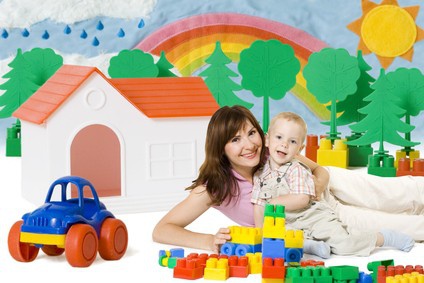
15.2 Origami
Study by St. Martin’s College in Lancaster set to determine the impact of origami in teaching children, especially those that have grown to hate geometry turn their interest to this exciting subject. The benefits of paper folding activities in classrooms are beyond count. In the study, several children aged between six and seven years were tasked to work on the populous paper bird, origami.
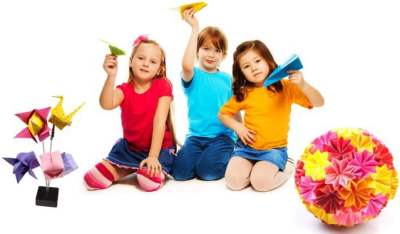
They were given the general idea, but allowed to work their way out towards coming up with the model. The main idea in the bird was to encourage those children to maximize on their geometrical math skills to make the bird. This same idea has also been used by teachers in teaching deaf students to grasp and love math.
Generally, deaf and hard hearing children usually take longer to learn mathematics than normal students, and thus in another study published in the journal of deaf studies and deaf education, origami was shortlisted as a valuable concept towards instilling interest and love for math. The point is that seeing, touching and handling of things, which is what hard hearing and the deaf normally rely on to be able to grasp ideas works out well with origami.
Origamiencompasses paper folding procedures, which means it is art by itself. Concepts embodied in math also endeavor to use the same approaches and illustrations. When children are allowed to come up with their own ideas to make origami, it offers an understanding to them on how they can come up with their own ideas to make mathematics an easy subject.
Some of the methods that will be applicable as the children fold papers to make the origami including planes intersections, visualization which is a concept used highly in architectural designs, as well as volume and area respectively.
15.3 Music Lessons
Educational music is a concept that has been used for many years to impact knowledge. This method encompasses series of songs and specially designed lyrics all targeting towards one objective, child teaching. But how has this method been maximized in the world of mathematics? According to CETA, music lessons have dramatic effects and substantial benefits when it comes to boosting a child’s performance in exams, improving discipline with other benefits among students.
Music empowers various techniques in math such as remembering complex formulas. Since music is made up of rhythm and beats, it is easier to remember a complicated formula when relayed in music form than when it is brought to children by using other forms. Children who are introduced or using this method to study are also categorized among those with outstanding verbal memory. Each music genre has its own application in education. This means that those children who like Hip Hop have a better chance of passing SAT tests with ease.

There are also songs that can be used to teach math. For instance, if a child is learning shapes, Ron Brown and Jack Hartmann are known for their efforts to bring the concept of music and math with shapes to reality. Ron Brown linked music to rectangles, square and triangles while Jack Hartman linked “Shape Up” and “Let’s Get It Fit” among others.
There are songs concentrating on units of measurement, and others concentrating on money, currency and budgeting. Overall, it is possible to solve almost every variable in math through music.
15.4 Board Game “Go”
“Go” is a board game for two players that originated in China more than 2,500 years ago, and used to be played by emperors and military generals to enhance their ideas of occupying more territories. The game is noted for being rich in strategy despite its relatively simple rules. According to chess master Emanuel Lasker who said: "The rules of Go are so elegant, organic, and rigorously logical that if intelligent life forms exist elsewhere in the universe, they almost certainly play Go”.
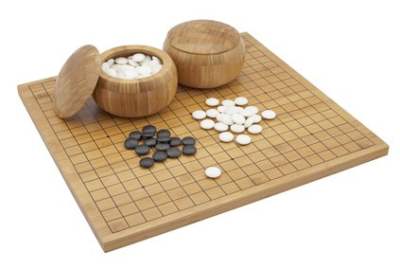
The two players alternately place black and white playing pieces called "stones", on the vacant intersections called "points" of a grid of 19×19 lines, and beginners often play on smaller 9×9 and 13×13 boards. The object of the game is to use one's stones to surround a larger total area of the board against the opponent player. Once placed on the board, stones may not be moved, but stones are removed from the board if captured; this is done by surrounding an opposing stone or group of stones by occupying all orthogonally-adjacent points. Players continue in this fashion until neither player wishes to make another move, and the game has no set ending conditions. When a game concludes, the controlled points (territory) are counted along with captured stones to determine who has more points to win. Games may also be won by resignation.
15.5 Board Game Chess
Many studies have been conducted to determine the impact of popular game of chess has in terms of intelligence on youngsters. The first research project on this matter dates back in 1973-1974 when Dr. Albert Frank analyzed information from 92 participants, which confirmed that playing chess led to improve abilities regardless of how each candidate performed during the overall game play. More studies have been undertaken since then to evaluate the role played by chess players to improve IQ. According to different reports, chess has been linked to a process by which the brain is made to create specialized patterns that in return would promote creative thinking. When the game is introduced to children in elementary schools and other higher learning institutions, the art of competing has been evaluated as significant towards an alert mind.
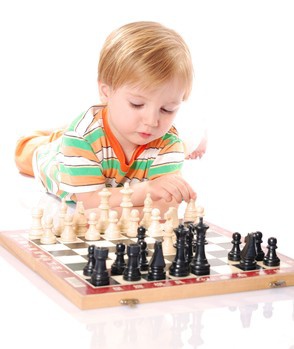
There are about 30 countries all over the world, which have already invested in the game and subsequently made it an extracurricular activity. But some countries have not realized the benefits of playing chess and how this benefits their young generations. This is the reason that in regards to educators and their opinions on this matter, some have concluded that this specialized board game stands above the crowd when improving skills in math.
Every move in chess is all about setting the mind straight, taking time to reason, and above all making an admirable decision. Incidentally, this is the same concept employed in the field of math and other related subjects. Studies have shown that students who took an interest in chess thereafter mirrored this interest in math and most have alleged that they even decided to major in math later in their careers because of the game.
Like math, music and art, parents have supported the idea that chess should be made part of the curriculum due to its direct connection to math and intelligence. Some new studies have also enlightened parents, caregivers and educators who used chess game to solve some of the problems that teachers and students faced in the past culminated to poor education.
While at the moment, the focus is on children, and game of chess can ideally be played by any person regardless of age. There are chess games suitable for young children such as chess puzzles, which have been associated with logic and efficient thinking. Although the game is also playable for fun, in most cases, it is a tournament game where eligible candidates’ lineup to bring about reputation in their schools by winning presents.
Today, various experts have different theories concerning this game on intelligence and as a mind developing tool; they have concluded that it is preferred because it helps improve a child’s concentration. The point is that those crowned as victors must have dedicated their entire focus on the game, and thus as a result, logic thinking is created.
If a child can understand the movements and the overall game strategy in order to win, the same concept can be applied in math. This is the reason that most institutions have recommended the game such that children who regularly find it hard to love math may like the subject through other means. And never forget that chess is fun!
15.6 Card Game Set
Using card game set to teach math is a new concept, which has been adapted to boost mental arithmetic results. In an experiment aimed to ascertain this back in 1997 and 1998, students in England and Wales were signed to participate in the experiment. It was confirmed as effective tool towards improving mental arithmetic, since many students are unable to understand how fractions, decimals and percentages work.
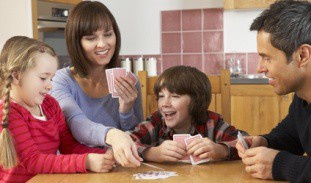
In this study, it was found that a card game set was able to identify those weak points in children and to subsequently correct them. The most applicable math ideas are that pupils can come up with their own methods to achieve certain results. Games allow people to learn, to devise techniques to reach the desired goal while at the same time, to improve experience.
Cards are mostly found in casino where they are used for gambling purposes, or at home where friends and relatives play for fun. A deck of cards can make a difference to kids with difficulties in math. While some people might think that there is a specialized math card, but this is not the case. As long as normal poker cards are accessible, it is enough for math purpose.
The strategy mostly is just like a normal poker game with rules controlling everything. Some of the achievements the procedure can provide include the ability to multiply, subtract, add, and divide respectively. Fractions, improper fractions and integers are also learned from a regular card game.
15.7 Other Types of Board Game
Depending on the type of board game, there are various skills that a child may have
access to. Board game go is one of the games that empowers children to understand
the working of whole numbers, the need for risk but with good judgment,
connections between grids, graphs and sequences, as well as operating with numbers
to distribute properties evenly.
Scientific evidence that examined this game at length has ascertained that algebraic equations, probability analysis and complex algorithms can be solved with ease, once the player adapts and understands the rules. Board games usually make remarkable birthday gifts, although sometimes they can be a bit costly, but their benefits are beyond count.
There are other affordable board games, but the most effective ones are usually said to cost a bit more. What makes them interesting is that they usually promote creativity among players allowing them to come up with their own strategies to win. This is the same technique employed in mathematics where kids can use several formulas to reach the same answer when solving a mathematical problem.
Go fish for a given number is also another method that promotes interest for math in children. Generally, all math cards have their own applications. But the most important thing is to understand the rules applied, because once children understand the rules, they can manipulate by themselves to come up with their own methods to win.
15.8 Tetris – Video Games

Video games can be used as a great method to stimulate children’s brain, especially those games offering problems solvents that force you to think quickly. One of the most popular games that is said to positively affect the mind is Tetris Games.
Tetris is a tile-matching puzzle video game originally designed and programmed by Alexey Pajitnov in Russia in 1984. The game and its multiple variants are available for nearly every video game console, computer operating systems and cell phones. Tetris came in as the second place in IGN's "100 Greatest Video Games of All Time."
A study carried out by The Mind Research Network for Neurodiagnostic Discovery found playing Tetris can improve brain performance. The tests were performed by multiple MRI scans of the brains of a test group of teenage girls. A scan was taken before the game was played, and after three months of regular playing. The research found that regular playing Tetris changed the structure of the girl’s brains. Their brains seem to become more efficient at processing information, and at the same time the amount of grey matter grew because of the cortexes thickened. Such an effect is seen as positive by the researchers and points towards game playing as a way to improve memory and brain function, or alternatively help stop mental decline.
| The use of computer games to improve performance is a technique that has been reviewed as highly resourceful. In fact, recent studies have made parents and other caregivers realize that children would rather play games than read books. This is why game developers have gone the extra mile to develop games and programs that engage children as though they were using other educational materials to improve their skills in subjects such as math and languages. |
15.9 The Gathering Cards
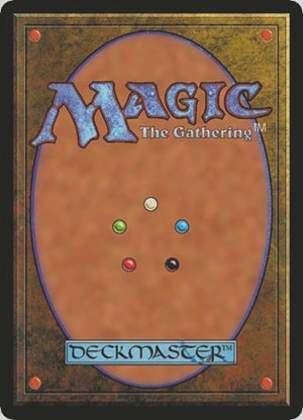
The Gathering cards game (MTG, also known as Magic) was the first trading card game and was created by Richard Garfield in 1993. Gathering cards game can be played by two or more players each using a deck of printed cards or a deck of virtual cards through the internet. The game was simply called Magic through most of playtesting, but when the game was needed to be officially named, a lawyer informed them that the word “Magic” was too generic to be trademarked.
Each game represents a battle between mighty wizards, known as "planeswalkers", who employ spells, items, and creatures depicted on individual Magic cards to defeat their opponents. Although the original concept of the game drew heavily from the motifs of traditional fantasy role-playing games such as Dungeons & Dragons, the gameplay of Magic bears little similarity to pencil-and-paper adventure games, while having substantially more cards and more complex rules than many other card games.
In a game of Magic, two or more players are engaged in a battle as powerful wizards (planeswalkers). A player starts the game with twenty "life points" and loses when he or she is reduced to zero. Players lose life when they are dealt "damage" by being attacked with summoned creatures or when spells or other cards cause them to lose life directly. A player can also lose if he or she must draw from an empty deck (called the "library" during the game), or if they have acquired 10 "poison counters". In addition, some cards specify other ways to win or lose the game.
15.10 Movie Donald Duck in Mathamagic Land
Donald Duck in Mathamagic Land is a 1959 made for children classic animation by Walt Disney. The film endeavors to show children how one of the most undesired subject, mathematics can easily be impacted on every child through music. In the movie, Donald Duck is usually on a mission and on his way; he learns that math actually originated from art, music, nature, architecture, games and science. The duck can see clearly that aspects in math such as Pythagoreans, ratios, vectors as well as angles all link to most daily activities that people are exposed to.

The narrator in the movie repeatedly shows how slicing leads to math, which means that almost everything in life is math. The fantasy land explored by Donald Duck has everything to do with math. There are trees with roots shaped like square roots, stream that flows with numbers as well as a geometric bird reciting the first 15 digits of pi. Just as some children are in denial about math, believing that math is for the geeks, Donald is hesitant on the same until Mr. Spirit guides the way by showing him how math can easily connect with music and other applicable routines in life. Just like Donald’s mission to understand how math works and its application in lives, the same concept can be used to nurture and spearhead the love for math in kids today. Children who enjoy watching cartoons can be introduced to animations that educate and entertain at the same time, which is a concept that Walt Disney achieved remarkably in 1959. By using what children love to drive a hidden concept into their minds presents better results than maximizing on other potentials to achieve the same goals.
Watch Movie in Youtube: http://www.youtube.com/watch?v=U_ZHsk0-eF0
15.11 What You Need to Know When Promoting Love for Math to your Child
Different children develop skills to love math and other subjects based on the
measures taken by their caregivers to understand their interests, and to transfer
those interests to subjects like math.
Although experts have argued other ways by attesting that the child’s capacity to understand math is usually dictated by his or her IQ, researchers have found ways that love for math can be triggered to any child through fun practices and continued learning. It has been realized that children will subsequently learn and develop math related skills if their caregivers don’t give up on them.
Various studies have been conducted to showcase how practice perfects several skills in children. For instance, in 2002, a study was able to convince caregivers that play is, in fact, essential for every child as he or she grows. Although the dominant factor was attributed to age and early exposure to some of the cool fun practices, one big factor was the popular sand and water play.
When children are taken to the beach, they are exposed to a very beautiful environment whereby, most start applying their modeling and architectural talents by building castles, caves, digging holes among other activities. This method allows their brains to develop and further improve their overall IQ. Fortunately, the same procedure can be transferred from the beach to any child’s home backyard by just introducing a similar custom made environment as the child would find in the beach.
Developing an admirable cognitive development is not something that every parent can be hopeful in achieving, if proper procedure is not followed. A cognitive development can be described as the process by which a child is able to understand a given problem and subsequently formulate an easier way to find a good solution of the problem at hand. During a child’s normal development, as years go by, depending on the environmental exposure, he will be able to enhance his memory skills andabilities to concentrate, to learn, and to analyze. The path taken when perceiving by his capability will require great imaginary and creative skills.
Learning activities have been widely used towards developing great child cognitive development skills. In order to understand how some of these objectives are achieved, we can try to analyze some of the ideas applied when triggering interest in subjects such as math, language, concentration and creativity.
In addition, counting games are very popular among parents and children these days. Though it is a trend that has existed for years, experts have considered this kind of interaction as one of the highly desirable methods when enhancing the love for math in children by parents. When parents talk about numbers, and ensure that the conversation in the house is mostly dominated by numbers during the early years of a child’s life, the child will be able to pick up the same interest and mirror it back to his academic performance in the future.
Another technique that has been highly used by parents is exposing their children to items that task them to count. For instance, some parents have maximized on grocery shopping a lot. They usually take their child with them during a shopping routine, and as each item is loaded into the trolley, their child can try to count in accordance with the number of items purchased. For example, if there are fruits of different kinds, the child will identify the fruits and thereafter count them separately before making an overall sum conclusion. This type of game has been reviewed as one of the most applicable and easy to formulate.
Although we are very much concerned about math, the subject is connected with other variables such as language, concentration and creativity respectively. For this reason, analyzing the role of each concept can help promote a better and improved idea about math. Language encompasses the art of reading and understanding the educative, informative or entertaining aspect of it. Reading is the only way to enhance a child’s vocabulary, but solving an equation in math also requires reading and understanding skills! Parents have the freedom to start reading with their children from the time they are very young and one way to achieve this is by reading together.
In regards to concentration, some other valuable tools when solving a math problem are specialized activities such as puzzles and other games that engage the minds of youngsters. The traditional jigsaw puzzle still dominates this field. Depending on the toddler’s age, a jigsaw puzzle can be purchased, and later the parent or caregivers can take the responsibility of teaching the child about the puzzle and how it works. Other popular games include card matching games, which have also been highly linked towards improving concentration in children.
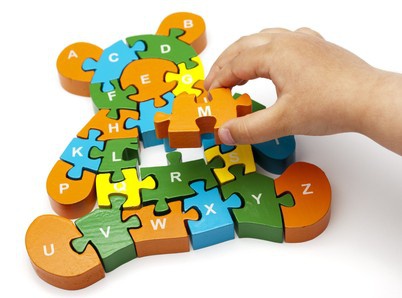
In terms of creative activities that also help a child fit for the society as an intelligent being, some of the renowned methods include art and music. The work of these techniques is primarily to foster admirable brain connections. Music has been used by teachers to help children remember difficult math formulas, and thus the reason that it categorizes as one of the top most used creative art skills to improve memory skills in math. Music was traditionally incorporated into a child’s life through jingles, but today, the type of music used differs depending on the interests of the child. To some extent, children who are also encouraged to learn musical instruments find it easy understanding the application of this concept in studies, and later apply the same methodology to promote improved math skills.
With improved technology, there are beneficial games and lessons for math accessible online. Children can be encouraged to love math with these cool and benefiting ideas. The method has been ranked high due to availability of visual learning, and a child can formulate his own pace and likewise manage time accordingly. In the old times, it was negatively believed that each child was talented to become an expert in various subjects and activities while in school. These days, almost every child can use a computer to drive an idea.
Lessons on the internet, especially those focusing on mathematics, have promoted improved interest to math by children. Visual learning includes computer animations. These animations can be used to educate children from infancy such that as the brain grows their focuses can also be enhanced. The internet outweighs a classroom because a child can measure his or her own pace.
Unlike where the teacher in school will constantly change her pace and thus become a disadvantage to slow learners or very quick learners, the internet can be custom controlled and that’s why up to this time, it is revered as a very applicable means to improve math and other skills on children. Math is all about numbers, hence for this reason, understanding how these numbers apply is important, and it might not be as hard as rumored. This is why children need to be convinced that it is an easy subject just like science and other subjects.
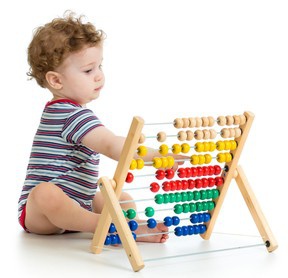
Teaching a young child to build interest in math is not like teaching an old dog a new trick. Although the early is the better, the love and interest for math can be promoted to any child at any age. Once the tutor understands that the concept in math is nothing more than just observing the rules of counting, whether it’s a kindergarten level or college level, the idea remains the same. For this reason, the child can be forced to do what he or she thought difficult at one time by just spearheading this concept. Some parents have realized going shopping with their children, especially shopping for groceries, is one way to boost interest and love for this negatively conceived difficult subject.
Chores around the house have also been categorized among those creative skills that can be used to instill love and interest for math. Generally, as the children go about their daily chores, they can try to beat their previous time every day; hence this allows them to understand addition and subtraction as they endeavor to achieve their goals. But this process will not just come; the parent or the caregiver should put out a present in every child beating the previous time. This method will not only teach them math, but will also boost their cognitive abilities through exercise.
There are much fun and cool ideas that can be used to turn the tables on those children who have grown to hate math and subsequently love it. Many math techniques have been devised to make it easier with the 1940 Googol technique still in function. Others include addition and subtraction symbols, zero and abacus, which has been linked to regular calculators.
15.12 How to Teach Your Baby Math - Glenn Doman Method
Note: The purpose of this Section is to make an overview of the aspects, features, and parts that make up the Glenn Doman method to teach Math at an early age. For a complete overview of the program, we recommend reading the book "How to Teach Your Baby Math" by Glenn Doman.
her intell

15.12.1 Description
The method created for Doman for teaching math to children is based in the use of flash cards with points (dots), numbers and images. Traditionally, the flash method involves physical flash paper cards, which you either make yourself or buy, and which you show rapidly to your child.
The work of right-brain educators Glenn Doman and Makoto Shichida shows that very young children can perceive quantity in a way not open to most adults. Flashing cards (at a speed of one second per card) is an effective method of teaching babies, because the information presented at speed is more easily apprehended by the right hemisphere of the child’s brain. Unlike left-brain memorization, which requires conscious, directed effort, right-brain learning is unconscious and effortless.
According to Doman, one year or younger is the ideal age to start the math program. The program and the activities used to teach math are easy to carry out by any mom or dad and include simple games and activities that are fun and stimulating. Aside from being easy, they also allow for the effective reinforcement of the parentchild relationship, having a positive influence on self-esteem, assurance and the general emotional intelligence of the child.
15.12.2 The Principles and Basic Rules to Apply the Doman Method
The principles and basic rules needed to apply the Doman method to teach your child math are the same described for early reading in the chapter 14 (please see 14.5.1 Principles of Doman Method and 14.5.2 Basic Rules Needed to Apply the Doman Method Effectively)
15.12.3 Materials - Doman Method
Two different types of cards are necessary for the long-phrases reading activities:
- Square Cards: White paper (medium or heavyweight paper recommended) 11 × 11 inches. It is recommended to prepare at least 100 cards.
- Self-adhesive Red Dots. 0.8 inch in diameter.
- Long Cards: White paper (medium or heavyweight paper recommended) 4 x 18- inch cards (10 x 46 cm). Use font (numbers) of 1-1/4 inch (30 mm) written in red. It is recommended to prepare at least 100 cards.
15.12.4 Learning Math – Steps
By teaching your child in her early years, you will help her learn math concepts naturally and intuitively. The following steps should be followed:
Step 1: Quantity Recognition
This method points out that quantities are the reality of numbers, while the numerals we use to represent them are arbitrary symbols. The program begins by teaching the numbers 0 to 100 as quantities. The IAHP sells flash cards for this purpose, with the quantities represented by red dots arranged in random formation.
On the first day, you show one set of five cards (numbers 1-5), three times a day. On the second day, you add a second set (numbers 6-10), which you also show three times a day. This means that you will be doing six math sessions a day. Starting from the third day, shuttle cards between the two sets (but keep five to a set). Except for the first time you show the numbers 1-5 and 6-10, remember to shuffle the cards before every lesson.

Teaching your child to to perceive actual numbers, which are true value of numerals. 1-100. 2 sets of 5 cards each, three times a day each set.
Starting from the sixth day, retire and add two (or more) cards per day. Begin by retiring and adding two, but be prepared to retire and add more, if you sense that your child would like to move faster. Teach 1 to 100, and finish with 0.
Step 2: Equations
Once you have taught the quantities 1 to 20, it is time to start teaching equations using quantity. You can use any of the quantities your child has so far learned. Do three equations per session, and three sessions per day. Since you are already doing six quantity sessions a day, this means that you will now be doing nine math sessions a day.

Start sessions with simple equations: 5+3=8, 4+11=15, etc. Continue introducing new quantities (dot cards, until you reach 100)

After two weeks of different addition equations, do subtractions, followed by multiplication and division (at two week intervals of 3 sessions of equations per day)
In the beginning, keep to two steps (e.g. 1 + 2 = 3). Spend two weeks on each operation, covering addition, subtraction, multiplication, and finally division. Now, it is time to move on to the next stage.
Step 3: Problem Solving
Your child has come far enough for you to be able to present her with two or three possible solutions to an equation from which he can choose the answer. (You should not ask the child for the solution outright, since that would be "testing" - which is frowned on by Doman). Give your child one problem-solving opportunity per session, tagged on to the end of his equations. So in each session, you will be giving him the answer to three equations, and asking him to choose the answer to a fourth.
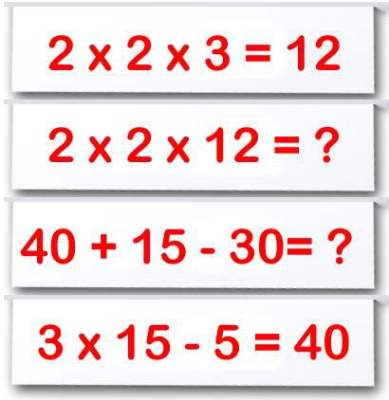
Progress onto more sophisticated three step equations, e.g: 2x2x3=12. After a few weeks of these equations, make them even more fun: combine addition and subtraction, multiplication and division
You can now move on to three-step equations (e.g. 2 x 2 x 3 = 12), for both, the regular equations and problem-solving one. Do this for a few weeks.
Now, it is time to start making mixed equations. You can mix addition with subtraction, and multiplication with division. However, no mixing of addition and subtraction with multiplication/ division is allowed. This is because, writes Doman, "Serious errors can result, errors which can be avoided only after learning both the rule about the Order of Operations AND the reasons behind it."
After a few weeks of mixed equations, add another term to your equations. This means that you will now be doing four-step mixed equations.
Step 4: Numerals
This extremely easy stage involves presenting the numerals from 1 to 100 and 0 in much the same way as you presented their quantities, In order to maintain your child's interest, you should move much faster than you did when teaching quantity, This means retiring three or four cards a day.
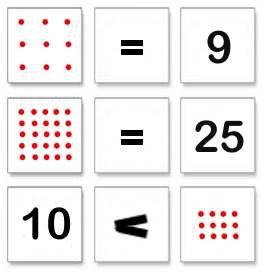
Combine numbers with dots and symbols
Once you have taught the numerals up to 100, show a variety of higher numerals - up to 1,000 and beyond, Choose any and show at random; there is no need to teach every numeral.
Step 5: Equations with Numerals
Now, just as you taught progressively longer equations involving quantity, do the same with equations involving numerals. Remember not to mix addition/subtraction with multiplication/division.
The Doman method is relatively flexible- parents can, and should, put their own stamp on their child's program of learning. Doman often writes "after a few weeks" when describing when to move on to a subsequent stage of teaching. Some parents would prefer to be told exactly what to do when, but this approach reflects the importance Doman places in moving at a pace that suits the individual child. In any case, his instructions are for the most part clear and detailed.

Equations with numerals
There is no definite end to the program - rather, teaching and learning are seen as ongoing, lifelong processes. The ultimate aim of the Doman program is to make the child fluent in the 'language" of math. As Doman points out, math "literacy" and a love for math and qualities unfortunately lacking in many of us.
15.12.5 Conclusion
Aside from valuable life lessons inherent in the understanding of the science of mathematics, being competent in maths also teaches the most valuable and complex problem solving skills and ability to use reason and logic. It is difficult to find a single area in life that isn’t touched by numeracy and mathematics. Being proficient in this subject can only be an advantage. Yet so many students shy away from mathematics, tap their fingers during lessons and stifle yawns. They have lost interest because they have lost competency.
The gift of math literacy is one of the greatest gifts you can give your child. Teaching math at an early age will only contribute toward his general competence and confidence in the subject, resulting in a child that is eager to learn and unafraid of numerals and their power. By teaching this valuable skill, you not only equip your child with a self-assurance in their mathematical ability leading to greater self-esteem, but also with the ability to reason and problem solve effectively. Giving your child the advantage of grasping numbers and quantities so early in life allows him to take this skill to all areas of functioning to succeed. What better way is there to ensure a confident and intelligent child?
By reading this book you have become aware of the myriad of ways to increase your child’s intelligence, self-esteem and confidence. By stimulating him, playing with him, nurturing him and teaching him how to read and how to do maths you are ensuring the best possible start for your little one. Moreover, you have also become aware of how easy and just how fun this journey can be. Spending time with your child teaching and exploring his capacities is really one of the greatest gifts you can give.
Enjoy this journey…
Enjoy this exciting time in your child’s life!
Summary ● The use of games in the family environment to create interest in the love for math is not new. Some techniques have been in existence for centuries, with others coming up as children, parents, teachers and technology endeavor to make things easier. ● Different children develop skills to love math and other subjects based on the measures taken by their caregivers to understand their interests and how to transfer those interests to subjects like math. ● The popular gathering cards game is addition war although multiplication war deal has also been reviewed among the most played out game in the gathering cards. ● The long listed frustrating subject no longer needs to be since children are getting introduced to easier and possible ways that motivate them to understand the benefits of math and just how despite the negativity linked to the subject, it can turn out as the most interesting of all. Some of the skills set that can be impacted to include tables, division, multiplication, subtraction, fractions, decimals, graphs and statistics among others. |